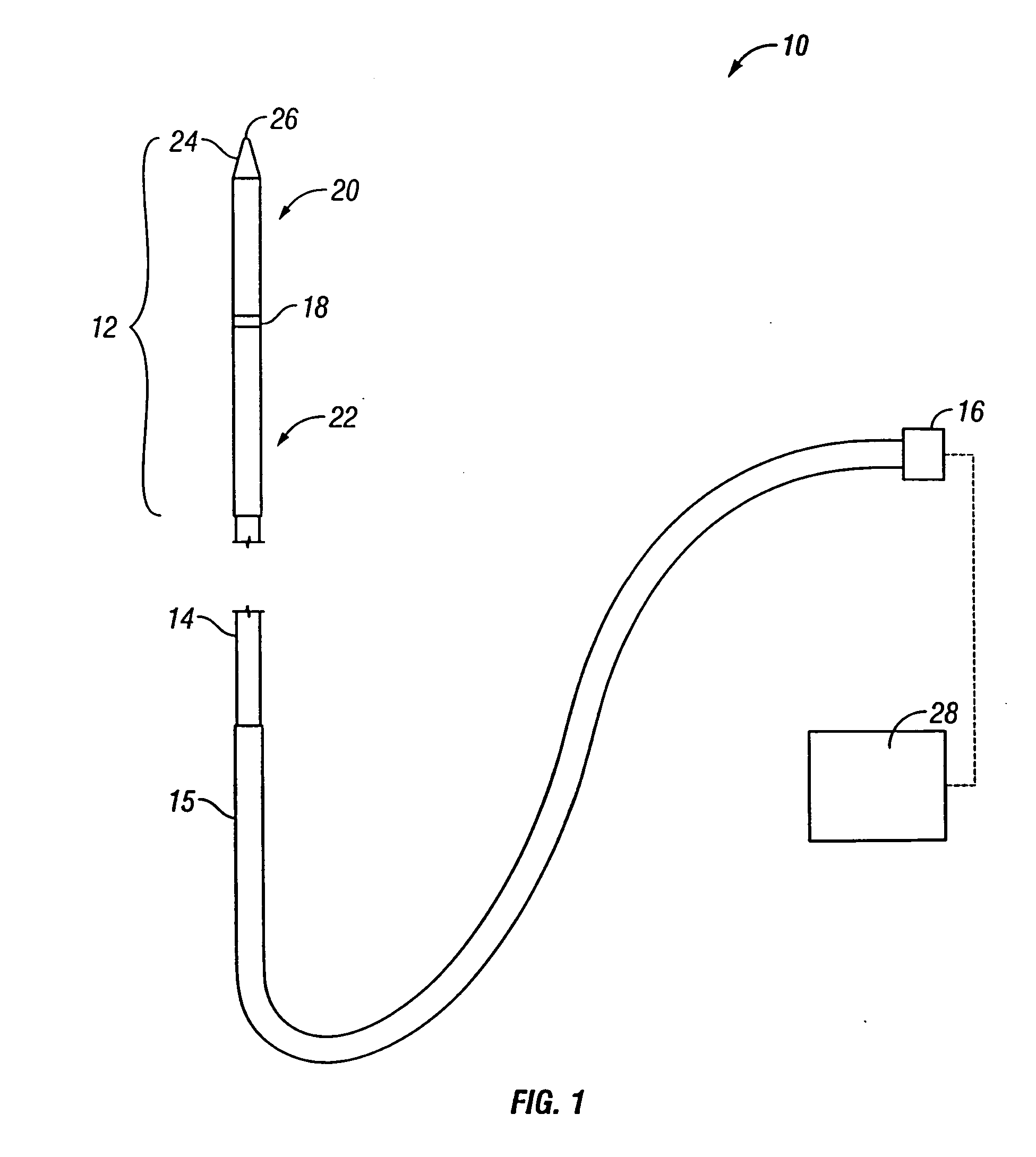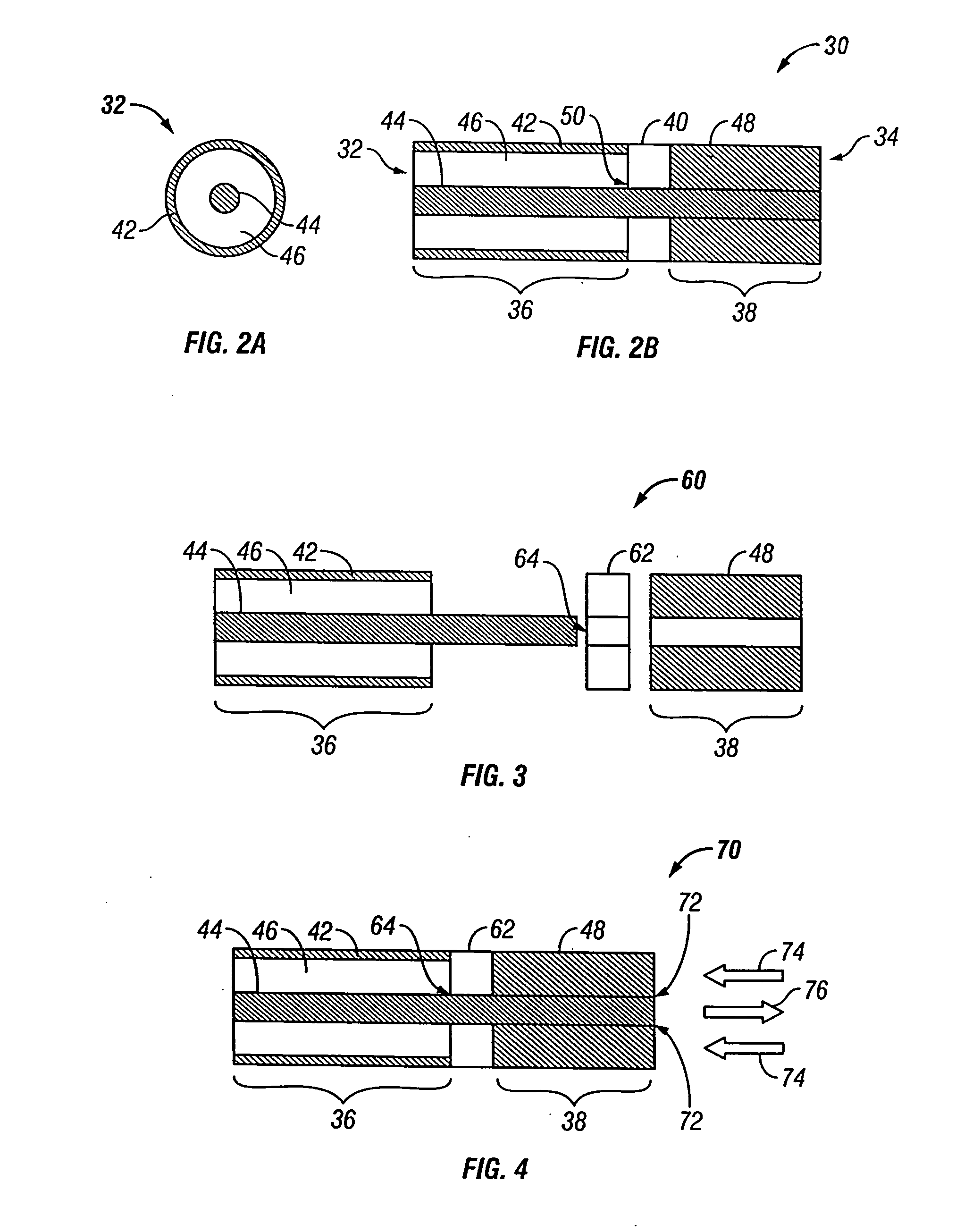High-strength microwave antenna assemblies
a microwave antenna and high-strength technology, applied in the field of microwave antenna probes, can solve the problems of unwanted heating of healthy tissue, non-invasive use of microwave energy requires a great deal of control, and thermal damage to most types of normal cells, and achieve the effect of increasing strength
- Summary
- Abstract
- Description
- Claims
- Application Information
AI Technical Summary
Benefits of technology
Problems solved by technology
Method used
Image
Examples
Embodiment Construction
[0051] In invasively treating diseased areas of tissue in a patient, trauma may be caused to the patient resulting in pain and other complications. Various microwave antenna assemblies, as described herein, are less traumatic than devices currently available and as described in further detail below, methods of manufacturing such devices are also described. Generally, an apparatus of the present invention allows for the direct insertion of a microwave antenna into tissue for the purposes of diagnosis and treatment of disease. FIG. 1 shows a representative diagram of a variation of a microwave antenna assembly 10 of the present invention. The antenna assembly 10 is generally comprised of radiating portion 12 which may be connected by feedline 14 (or shaft) via cable 15 to connector 16, which may further connect the assembly 10 to a power generating source 28, e.g., a generator. Assembly 10, as shown, is a dipole microwave antenna assembly, but other antenna assemblies, e.g., monopole ...
PUM
| Property | Measurement | Unit |
|---|---|---|
| temperatures | aaaaa | aaaaa |
| threshold temperature | aaaaa | aaaaa |
| temperatures | aaaaa | aaaaa |
Abstract
Description
Claims
Application Information
 Login to View More
Login to View More - R&D
- Intellectual Property
- Life Sciences
- Materials
- Tech Scout
- Unparalleled Data Quality
- Higher Quality Content
- 60% Fewer Hallucinations
Browse by: Latest US Patents, China's latest patents, Technical Efficacy Thesaurus, Application Domain, Technology Topic, Popular Technical Reports.
© 2025 PatSnap. All rights reserved.Legal|Privacy policy|Modern Slavery Act Transparency Statement|Sitemap|About US| Contact US: help@patsnap.com



